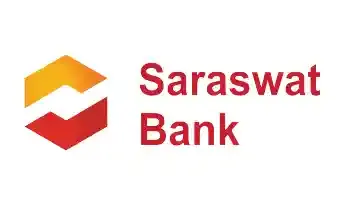Get instant loan offer suitable to your profile !


On this Page:
Explore the best banks for overseas education loans. Compare interest rates, loan amounts, and terms to find the ideal option for your study abroad aspirations.
Thinking about studying abroad but worried about the costs? You're not alone! Figuring out the best bank for education loan to study abroad can be as tricky as picking the right course. This quick guide cuts through the confusion, offering clear insights into securing the perfect education loan. Whether you're leaning towards a secured or unsecured loan, or deciding between a public bank, a private bank, or an NBFC, we've got you covered. Let's simplify your options and help you make a smart choice by guiding you about the best bank for education loan, so you can focus on packing your bags rather than fretting over finances. Applicants often face the dilemma of which bank is the best bank for education loan? This blog will clear up all your confusion regarding education loan best bank in India. Ready to find your funding fit?

Pursuing higher education abroad is a significant aspiration for many, yet financial constraints are often a hurdle. Education loans are crucial in overcoming these challenges, offering essential support. They are mainly of two types: secured and unsecured, each tailored to meet various borrower needs based on eligibility, collateral, and interest rates.
Secured education loans require the borrower to provide some form of collateral as a security against the loan amount. This collateral can be in the form of property, fixed deposits, or any other tangible assets. The main advantage of secured loans is their lower interest rates compared to unsecured loans, as the risk for the lender is significantly reduced by the collateral. Additionally, secured loans often come with higher loan amounts and longer repayment periods, making them suitable for those who need substantial financial assistance for their education abroad. However, the process of getting a secured loan can be lengthy and education loan providers in India for secured loans require the borrower to have assets of significant value.
Unsecured education loans are pivotal in deciding which bank is the best bank for education loan without collateral for abroad, making them a more accessible option for many students who do not have significant assets to pledge. These loans are granted based on the borrower's creditworthiness and potential future earnings. While unsecured loans offer the advantage of quick processing and disbursement, they usually come with higher interest rates than secured loans due to the higher risk involved for the lender. The loan amounts are generally lower, and the repayment terms are shorter compared to secured loans. This type of loan is ideal for students who need a smaller loan amount and are confident in their ability to repay the loan quickly after completing their studies.

Selecting the right lender for financing education abroad, or figuring out education loan best bank for abroad education, is as important as choosing the right university. The market offers a range of lenders—public banks, private banks, and Non-Banking Financial Companies (NBFCs)—each providing unique products, services, and terms to meet the varied needs of students and help you in figuring out best bank in India for education loan.




Choosing the best bank for Abroad education loan involves considering various factors such as loan amounts, interest rates, and repayment terms. Public banks are often preferred for their lower interest rates and extensive branch networks. These are often preferred for secured education loans over unsecured loans because of the higher loan amount. A few benefits and drawbacks of public banks are shown in the table below to help you find the education loan best bank, that suits your financial needs.
| Benefits | Drawbacks |
|---|---|
|
Lower interest rates |
Lengthy documentation and processing time |
|
Higher loan amounts |
Stricter eligibility criteria |
|
Subsidy schemes available & Tax benefits |
Limited personalized services |
Now that you know the benefits and drawbacks let's look at some of the public bank options available for you to help you figure out the best banks in India for education loan to study abroad.

Private banks offer a blend of competitive loan products with the convenience of faster processing and customer service. They are often preferred for unsecured education loans over secured loans but both options are available in the majority of the banks. They have a list of universities that are a major factor in determining your loan amount. A few benefits and drawbacks of private banks are given below to help you decide education loan best bank.
| Benefits | Drawbacks |
|---|---|
|
Higher interest rates than public banks |
|
|
Higher unsecured loan amounts |
Stricter on target universities |
|
Flexible repayment options |
Higher processing fees |
When you are looking for the best bank for education loan, here are a few options available for you if you wish to choose private banks
| Lender Name | Maximum Loan Amount | Approx Interest Rate Range |
|---|---|---|
|
10.75%-12.25% |
|
|
10.50% - 12.50% |
|
|
10.90% - 12.5% |

NBFCs have become increasingly popular for their flexible and customer-friendly education loan products. These are yet another type of prominent lender with easier eligibility to meet with just a little additional interest rate. In a few cases, you will find yourself choosing NBFCs as they can provide you with the best abroad education loan. Some benefits and drawbacks of NBFCs are:
| Benefits | Drawbacks |
|---|---|
|
Flexible eligibility criteria |
Higher interest rates than banks |
|
Quick loan processing and disbursement (mostly online) |
Specific university list for which only loans can be provided |
|
Customized loan products |
Repayment of interest during the grace period |
The NBFCs are majorly preferred because of the unsecured education loan as people that have collateral to pledge prefer banks. Some of the NBFC options with their respective maximum unsecured loan amounts are shown below:
| Lender Name | Maximum Loan Amount | Approx Interest Rate Range |
|---|---|---|
|
10.50% - 12.5% |
|
|
11% - 13% |
|
|
10.5% - 12.5% |
|
|
10.50% - 12.75% |

Selecting the best bank for education loan for your abroad education loan is not a one-size-fits-all decision. It requires careful consideration of your personal needs, financial situation, and long-term plans.





By evaluating these factors, you can analyze education loan best bank in India for education loan for abroad studies, you should choose the best bank for education loan that best fits your unique needs and circumstances, ensuring your education journey is as smooth and stress-free as possible. Navigating the maze of education loans for studying abroad doesn't have to be a solo journey. With this guide, you've got a clearer path to understanding your options between secured and unsecured loans, as well as the pros and cons of opting for public banks, private banks, or NBFCs. However, the real secret lies in choosing a lender that aligns perfectly with your unique needs. Don't spend hours researching and comparing; let GyanDhan do the heavy lifting for you, free of cost. Check your eligibility with GyanDhan now and get matched with the best bank for your education loan abroad. Your dream university is waiting; let's make it happen!

| Bank | Maximum Loan Amount | Interest Rate | Loan Tenure | Moratorium Period |
|---|---|---|---|---|
|
SBI |
Up to INR 1.5 crore |
10.15% - 10.65% |
Check Your Education Loan Eligibility

Ask from a community of 10K+ peers, alumni and experts
Trending Blogs
Similar Blogs

Network with a community of curious students, just like you
Join our community to make connections, find answers and future roommates.. Join our CommunityCountry-Wise Loans
Best Lenders for Education Loan

ICICI Bank

Axis Bank

Union Bank

Prodigy

Auxilo

Credila

IDFC

InCred

MPower

Avanse

SBI

BOB

Poonawalla

Saraswat